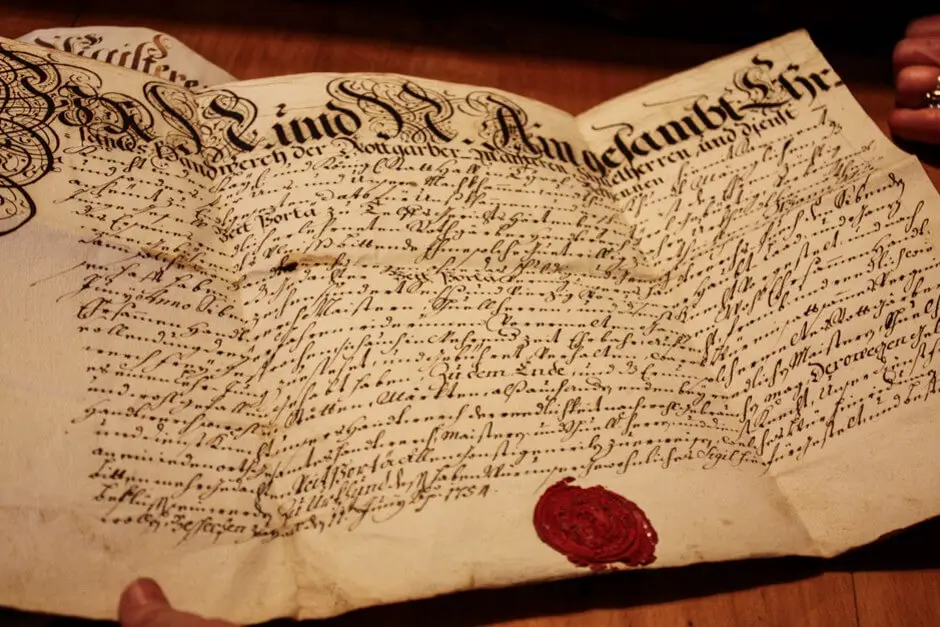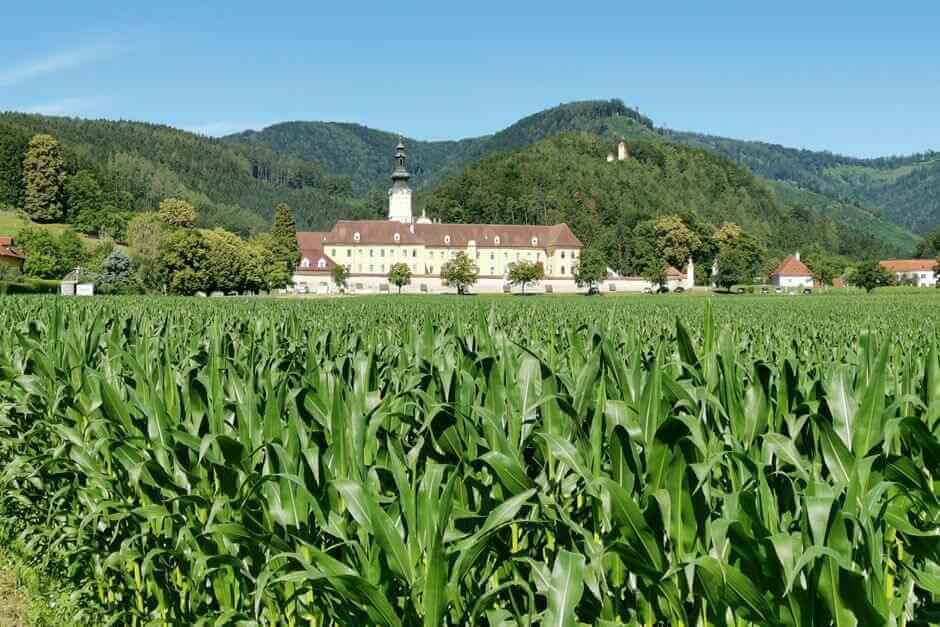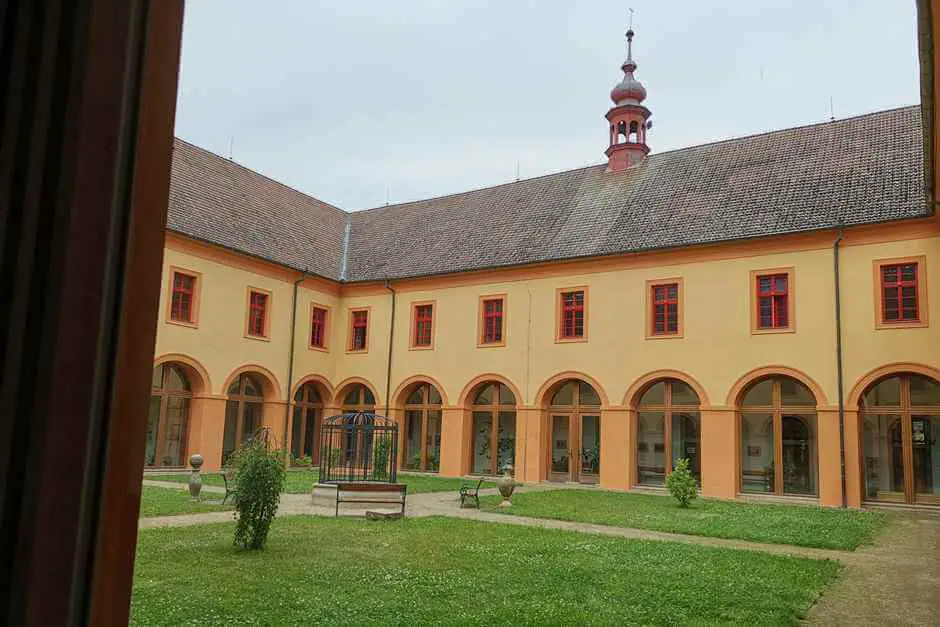Shopping in Salzburg: Traditional Shops and Hidden Treasures
We went shopping in Salzburg and discovered Salzburg shops that have existed for centuries. Shopping in Salzburg is fun. But there is more to it than that. Salzburg shops with tradition tell stories from the old Salzburg country and from AustriaWooden carts once rattled over the cobblestones of Steingasse into Salzburg. Stone projections on the houses along the street indicate that the drivers of these carts were not always careful of the houses they drove past.
The stone bollers were intended to prevent the wagon wheels from damaging the walls of the houses in the narrow alley. Stagecoaches took their passengers to the intersection with Stefan-Zweig-Weg and turned there over a bridge over the Salzach, which no longer exists today. Wolf Dietrich von Raitenau, Prince-Archbishop of Salzburg from 1587 to 1612, had it torn down as part of the Baroque renovation of the old town. Here we present Salzburg shops where it is fun to go shopping in Salzburg. This makes a shopping trip through Salzburg and surroundings.
Tip: You can stay in Salzburg in these hotels.
The district for the unwanted city dwellers
The Steingasse is located on the north bank of the Salzach River below the city wall, which runs over the Kapuzinerberg. It is separated from the old town by the river Salzach. For a long time, the river served as the fragrance boundary in the city. Here, and in Lederergasse, were the tanners, dyers, and butchers who practiced their trade in the vaults of their houses. Shopping in Salzburg used to be a double-edged thing.
The “Maison de Plaisir”, which I accidentally discover on our tour, shows that this also included the semi-silk trade. Unpleasant smells and people on the fringes of society should be kept away from the fine society on the other side of the Salzach. Therefore, the river acted both as a smell limit and as a social dividing line in the social fabric of the city. We are on the streets of Salzburg looking for traditional businesses and shops with tradition. We want to learn more about the families whose craft businesses and businesses have been passed down from father to son - or daughter - for generations.
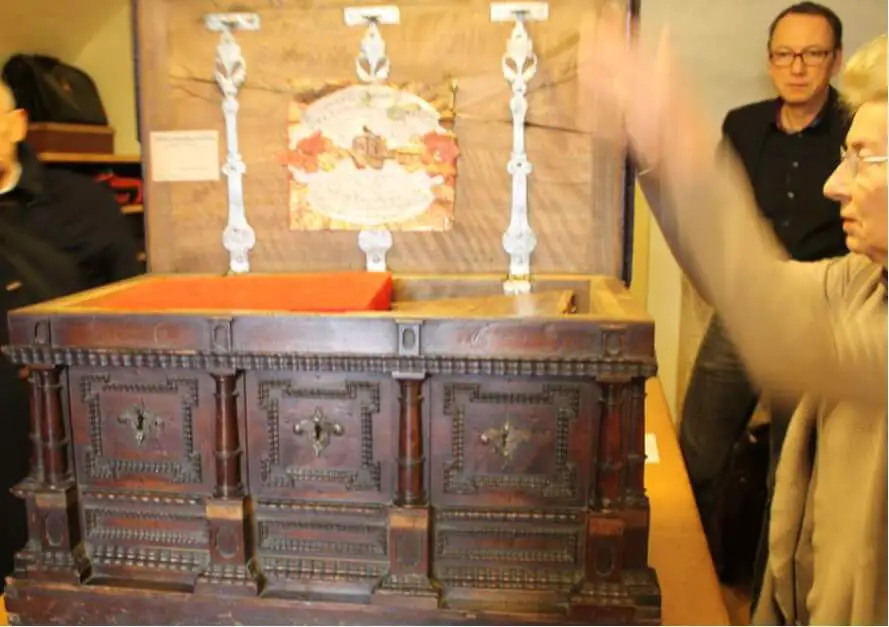
Historic Shops in Salzburg: Shopping with History
Our tour of Salzburg Shops with tradition are limited to the Steingasse, the Getreidegasse, the Alter Markt and the corner where the Brodgasse flows into the Alter Markt. While on the north bank of the Salzach were located the business enterprises, whose work was associated with foul odors, are in the streets on the other Salzachufer and in the old town those shops with tradition, the fine spices, fabrics, lace, handmade umbrellas, noble traditional clothing and expensive Sell delicacies from chocolate. The signs of the guilds above the shops in the Getreidegasse point to the diversity of the offer, which the fine lady and the fine gentleman found here even in Mozart's time and still finds today. Shopping in Salzburg used to be based on the shop signs. We visit some of these establishments and get stories from the family tradition told by their current owners.
The "House of Pleasure" and other Salzburg shops
We leave the "House of Pleasure" on the left, even if it is still open between 14.00 and 4.00 in the morning. It is rather questionable whether one can speak of family tradition here. Instead, we continue to the formerly most important intersection on the north bank of the Salzach, where the short Stefan Zweig path branches off from Steingasse towards the river. This was once one of the most important places in the city. It's hard to believe when you see how small it is. “In Mozart's time, only about 15.000 people lived in Salzburg,” explains Cornelia Thöni, who shows us this side of Salzburg. "There was enough space to meet here to buy fresh meat, fetch leather goods or have fabrics dyed."
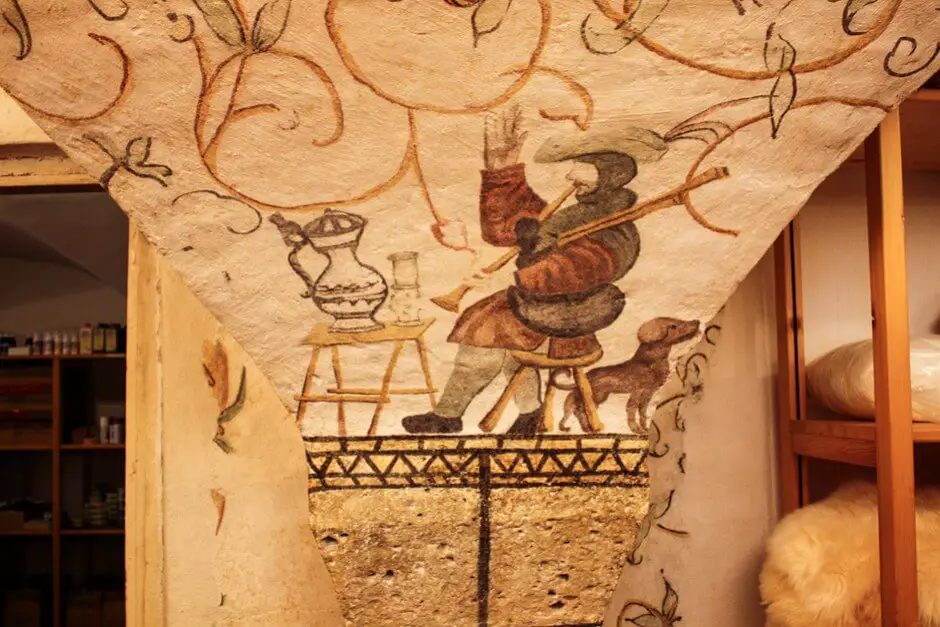
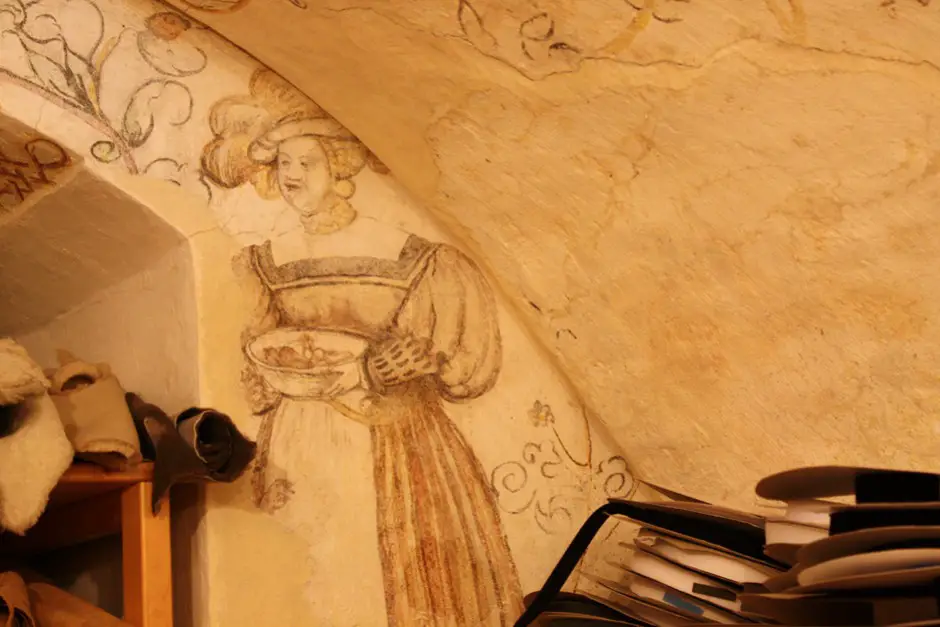
Discover Salzburg's craftsmanship: Where tradition meets quality
In Salzburg's alleyways you will find many small workshops. Here you can see craftsmen at work. They make artistic objects out of wood, leather and silver. These places preserve old techniques. During our visit we discover the stories behind the traditional products.
The tannery Schliesselberger - Rotgerber since 1455
Only a few steps further, where the Lederergasse leads down from the Linzergasse, is the house of the Schliesselberger family of red tanners. Typical for Salzburg shops with tradition: On the company sign above the entrance to the shop, which is today Suitcase, Bags and belts sold, proudly emblazoned the founding year. The Schliesselberger family has been processing and selling leather goods since 1455.
We go up to the workshop on the first floor, where the owner's mother proudly displays her family treasures: a guild chest, where she keeps historical teaching letters. In it they have certified the journeymen the successful completion of their training as a master tanner. One of them is even written on parchment. Its leather looks almost transparent. In the storage room next door, where shoe soles next to skins and leather on shelves await their processing, they show us one of the oldest rooms in the house.
The guild of Rotgerber - Salzburg Shopping since the Middle Ages
The cross vault indicates that it already existed in Gothic times. Wall and ceiling paintings suggest that he once served as a meeting room for the Rotgerber Guild. Maybe there were common celebrations here? The portrait of a musician in front of an oversized beer mug and a woman carrying a bowl full of food seems to prove it. However, there are no written records of this. On our way down the Lederergasse we make a short detour to the farm of the Schliesselberger tannery. We pass the former city wall. In the yard were once the Gerbgruben, from which the unpleasant odors of the leather processing industry emanated.
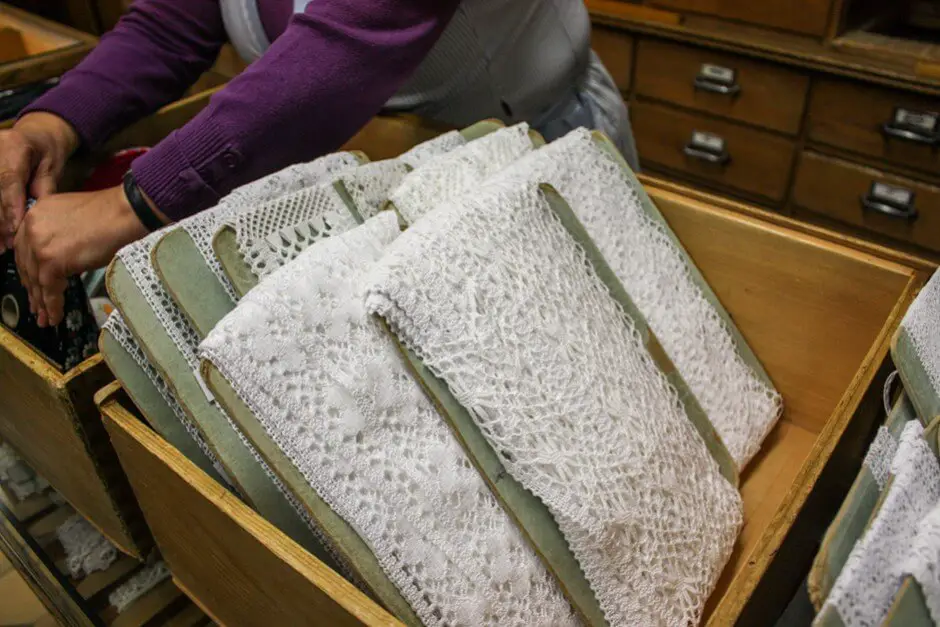
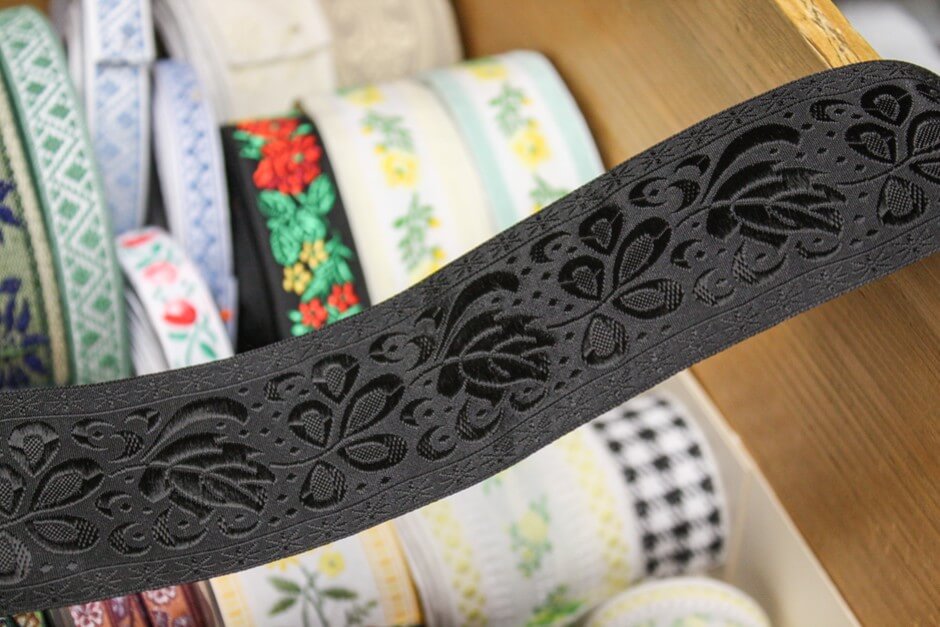
The best shopping tips for Salzburg's Old Town
In Salzburg's old town you will find everything from handmade treasures to regional delicacies. A stroll takes us to traditional shops and markets. We discover special souvenirs and local products. We browse through the shops and explore what makes the old town so unique. Where would you like to go first?
Salzburg shopping at Knopferlmayer am Rathausplatz
The situation is quite different at the Knopferlmayer on Rathausplatz on the other side of the river. Crochet lace and ribbons hang in the shop window of the little shop. The Mayer family has been offering buttons in all sizes, colors and variations for 250 years. This is Salzburg Shopping for the fine lady. I can well imagine how the fine ladies of the company used to go in and out to get lace for their next ball gown, or braids for her feastdirndl.
As in other traditional shops, much of the early days recall when the business founders started their business. In the business of the Mayer family I feel transported back to those times. While on one side of the shop a wall shelf is filled with boxes full of buttons, on the other side of the store is a shelf whose wooden drawers promise a lot.
It is only when the shop owner puts some of them on the counter that we see the beauties hidden in them. Wide borders and ribbons and borders that look good on every costume. "There are many young people who embellish their jackets with such ribbons," she tells us with a laugh. “Today it is no longer so important that it fits a certain style. What looks nice is selected. ”And she shows us a beautifully woven black border:“ It is often used as a trim to upgrade simple jackets. ”Shops with tradition need perseverance.
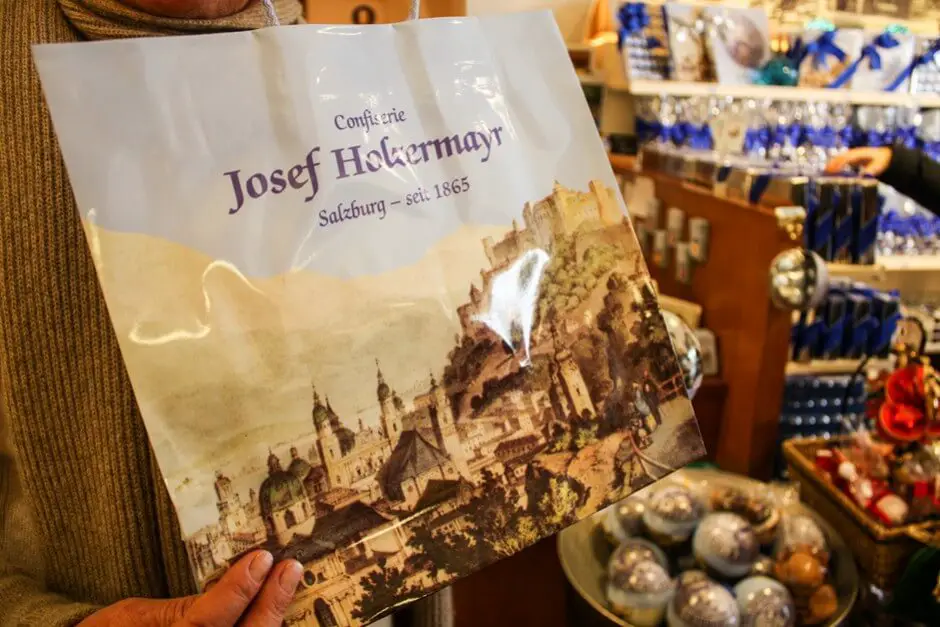
Shopping through Salzburg: Umbrellas, sweets and handicrafts
While shopping in Salzburg, we come across handmade umbrellas, sweet treats and lovingly crafted handicrafts. We stroll through the alleys and discover the variety. Stories and traditions await in every shop.
The Confiserie Holzermayr - Salzburg Shopping for chocolate lovers
Confiserie Holzermayr is also one of the Salzburg shops with tradition: the sweets from the Holzermayr confectionery in Salzburg have been around since 1865. "It was not always easy to provide the Salzburgers with sweets," tells us the current owner. “My grandfather and father had to be inventive, especially during and after the two world wars. There were times when it was very difficult to get chocolate and other raw materials from which we make our chocolates and sweets. ”
This is not a problem today. The truffle chocolates with and without alcohol, the rum loafs, the chocolate covered pineapple, orange or apricot slices, the praline cubes made from nougat or marzipan and the almonds splinters prove this.
Holzermayr is the only confectionery in Salzburg that can call its chocolate marzipan nougat balls "real Mozart balls". It can be packed in silver-blue paper, unlike the competition from Bavaria. If you cut open the two balls, you can see that they have a different "inner life": while the real Mozart balls from Holzermayr have a nougat core coated with marzipan and chocolate, the Mozart ball of the competition has a different composition. It has the marzipan portion in the core, surrounded by nougat and white and dark chocolate.
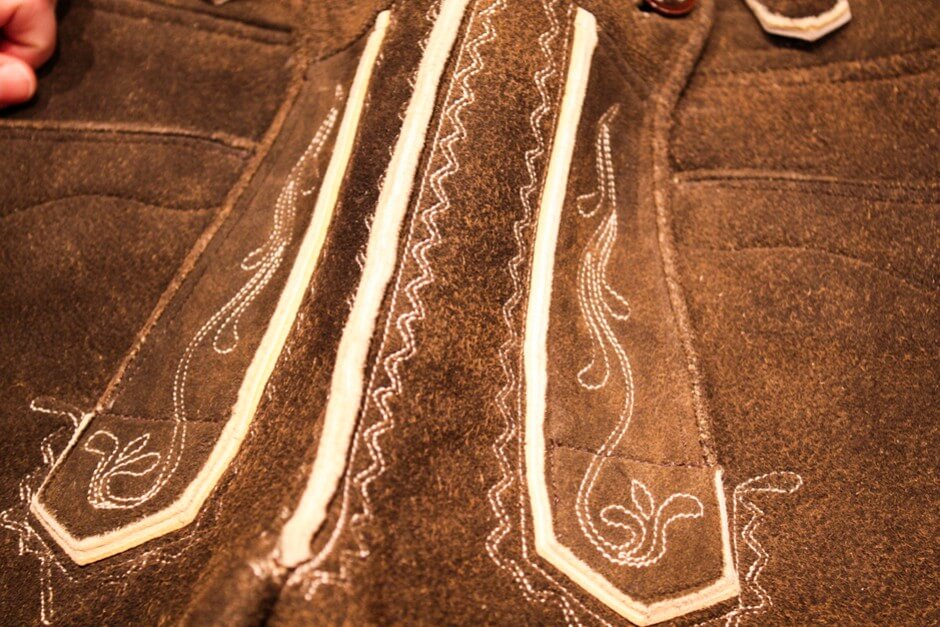
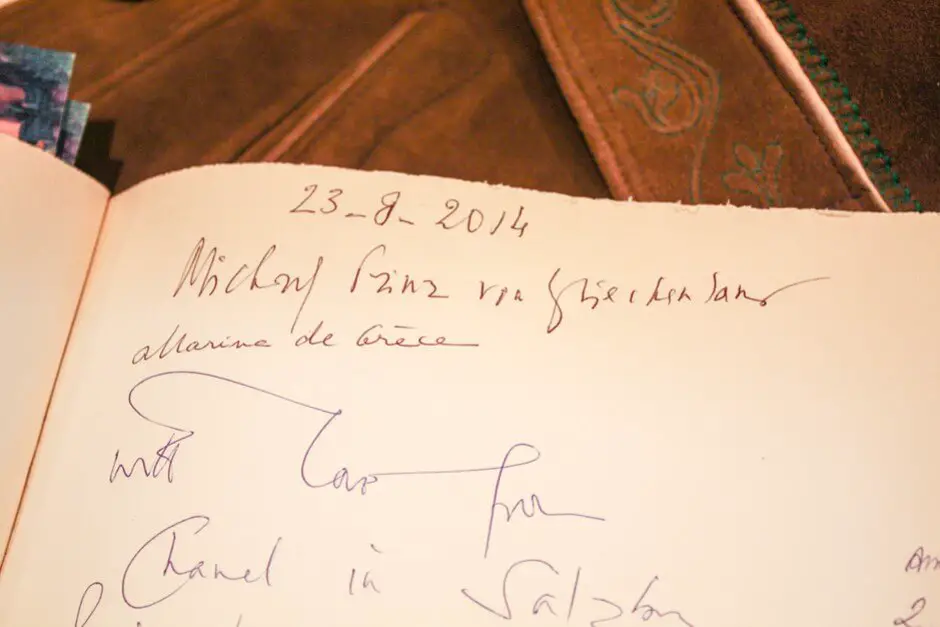
Even the emperor went shopping at the White Tanner in Salzburg
The oldest of the traditional shops that we get to know on our tour of Salzburg is the white tannery Jahn-Markl, which has its workshop in Goldgasse. Since 1408, the family has been producing suede clothing and traditional costumes.
The master company was once a supplier to the court and chamber, and has repeatedly made lederhosen even for Emperor Franz Josef. "But do them so that they don't look so new," the emperor is said to have said. "Of course we fulfilled this wish."
We visit Mrs. Jenner, the owner, in her shop at Residenzplatz 3. From the outside, the store looks rather inconspicuous. What hides behind the doors and in the narrow shop, on whose shelves leather pants and traditional jackets hang, takes my breath away. Especially when Mrs. Jenner brings out her customer and guest book. This is Salzburg shopping superlative.
"Our newest customer is the Prince of Greece," she says proudly. And then she starts leafing through her customer book. This reads like a who's who of high society around the world: the American Hollywood actor Mark Harmon is just as much a customer of her as the entire nobility of Europe and the greats of the fashion world. Names like Metternich, Chanel, but also the von Trapp family keep appearing in their customer book.
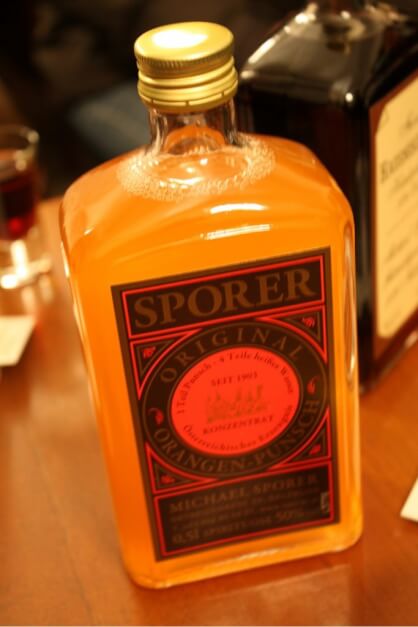
You can get orange punch in Salzburg at Sporer in the Getreidegasse
“At Christmas time, seventy people are already in our shop and pick up Mulled wine or orange punch for the winter evening, ”says Michael Sporer, the current owner of the liqueur and punch factory in Getreidegasse. We look around in disbelief, the little shop with just ten people is already full. Michael Sporer laughs and says: “Oh, that's okay. The people who want to have a drink here get their drink from the counter and then go to the back. And if you can't get through to the checkout, you shout your order from the back rows, get the goods over the heads of the other customers, and we get our money the same way. "
We are there after Christmas and find a table in the tiny adjoining room, where just two tables can be found. I try the orange punch that Sporer Manufaktur makes itself. Petar sips a glass of herbal liqueur. The orange punch is available since 1927. It is prepared according to old family recipe from orange juice, various rums and liqueurs. You should not drink it straight out of the bottle, but mix a portion of punch with four parts of hot water. It's almost too alcoholic for me, but on cold winter nights, the drink will quickly make you feel warm.
The Sporers operate their liqueur and punch manufactory since great-grandfather's days. On the 1. June 1903 presented Franz Sporer for the first time homemade schnapps, liqueurs and rum. In good times opened his brandy tavern ever at 7 clock - in the morning mind you! Traditional shops have many stories to tell.
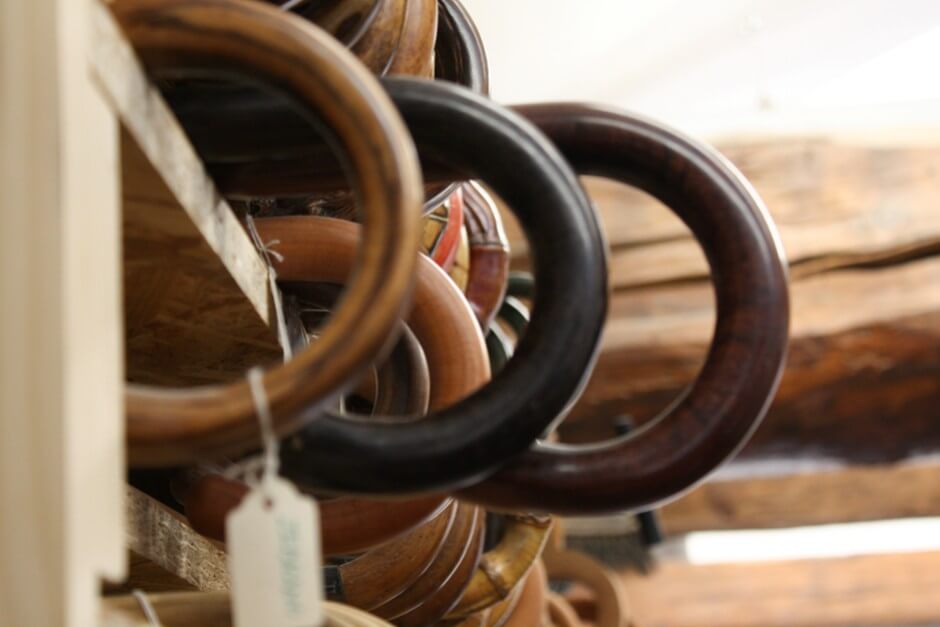
Handmade umbrellas from Kirchtag in the Getreidegasse
About umbrellas I had never really thought until my last visit to Salzburg. What are they made of? Did you know that even wood from Africa is used for the grip of umbrellas? Or that umbrella poles are not painted, but impregnated with oil?
We learned this and more at the umbrella factory Kirchtag in Salzburg's Getreidegasse. The shop and workshop have existed since 1903. Alois Kirchtag opened a "sun and umbrella shop" at that time. Like most of the other shops and workshops that we introduce to you here, this family has had to endure ups and downs in business.
Up until a few years ago, umbrellas were only repaired in the Kirchtag workshop. In our fast-paced world, it is better to throw away an umbrella than to have it repaired. And so the current generation of the Kirchtag family started to produce high-quality umbrellas manually. When Petar asks what wind strengths such an umbrella can withstand, the current owner laughs and says: "It can be a hurricane."
They look really strong and hard-wearing: the black men's umbrellas by Kirchtag. You can even have your own individual shade made in the workshop and have the choice between a whole range of different types of wood for steal and a variety of fabrics for umbrella covering. Only one thing all Kirchtag umbrellas have in common: good manual work, and they withstand even the strongest storms.
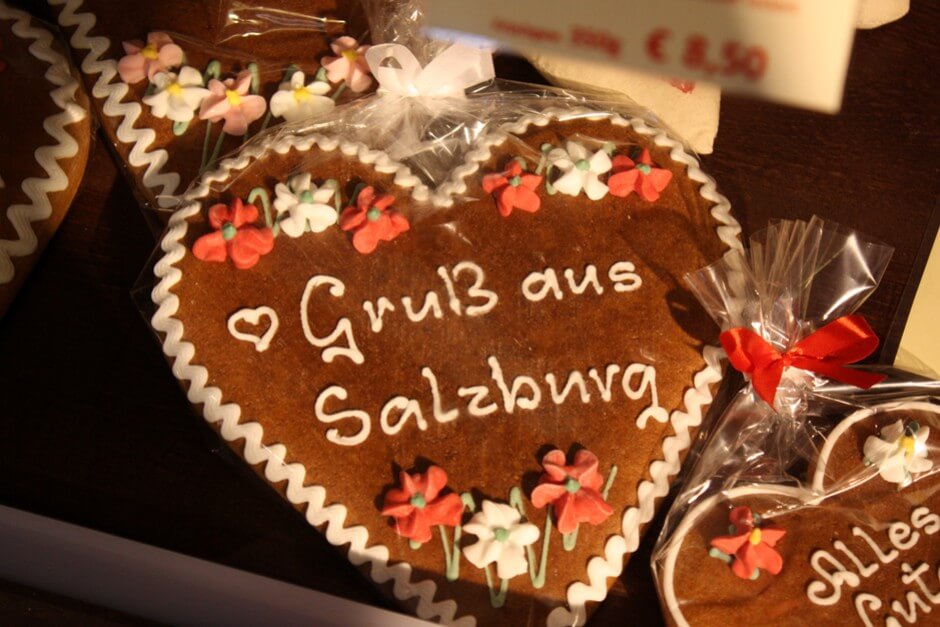
What do gingerbread and candles have in common?
This question arises during our visit to the Nagy candle and gingerbread manufactory on Sterneckstraße. This is not obvious at first glance, as Nagy candles are no longer made from beeswax. But if you think back in history, it quickly becomes clear that the two products really have something in common – namely the bees. Beeswax was originally used as a raw material for making candles. And one of the most important ingredients for Gingerbread is honey.
What could be more appropriate than introducing the Lebzelterei? You do not know what a Lebzelter is? Not until a few weeks ago. Lebzelter is a trade introduced at the dawn of modern times that allowed its operators to process and distribute honey. Lebzelter had the right to brew mead, pour or draw candles and bake gingerbread. These products they were allowed to sell in their own shop. Some of them even had a licensed license to serve Met.
The Nagy family came from Hungary to Salzburg and opened their Lebzelterei in the year 1879. She is one of the last to practice candle making and gingerbread baking under one roof. A teaching profession is the Lebzelterei not a long time. To pull candles, the workers are now only trained. Recognition as a teaching profession is suspended. In the gingerbread and candle manufactory Nagy candles and gingerbread are still made by hand. Candles are pulled and colored on one floor of the factory, gingerbread is baked in the next, and in the third, the candles are hand-decorated with motifs. Traditional shops continue even almost vanished occupations.
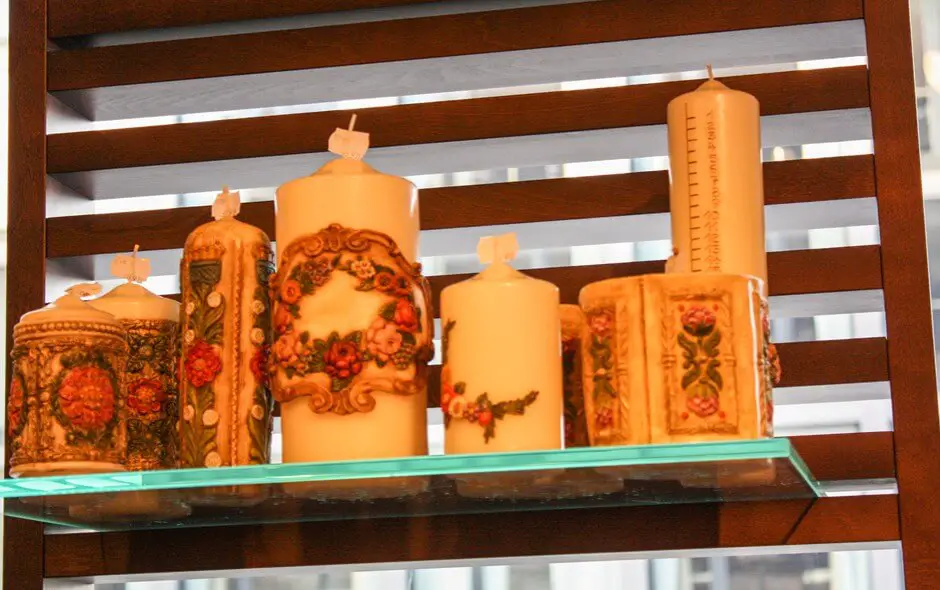
Conclusion: Salzburg Shopping with tradition is exciting
Our tour through the shops with tradition of Salzburg ends as it began: outside the old town in the district north of the Salzach. The Nagy Lebzelterei moved from Linzergasse to the new facility a few years ago. The reason for this is that the old operating rooms were too small and larger production rooms were necessary due to growing demand. A promising sign for the family businesses in Salzburg. And it's nice that the exclusion from the high society in the old town of Salzburg is no longer the reason for the move to the areas beyond the city wall, but the economic success that these craft businesses achieve. We had a lot of fun on our tour of the traditional shops, businesses and handicraft businesses in Salzburg. Perhaps this is a suggestion for your next visit to Salzburg to explore it yourself?
Travel Arrangements:
Parking at the airport
Here you can reserve your parking space at the airport.
Getting There for Shopping in Salzburg
Compare and book flights here* (Advertisement). Lufthansa, Austrian Airlines and other airlines fly to Salzburg. It is possible to travel to Salzburg by train.
Car Rentals:
Cheap car hire - book quickly and easily!
Accommodation in Salzburg *
Book your accommodation in Salzburg via our partner booking.com.
If you book through one of these offers, we receive a commission, which we use to run this blog.

Do you know this?
- Advent in Salzburg
- Where can you eat well in Salzburg restaurants?
- Baking supplies store
- Vienna Shopping away from the mainstream
- More than the usual shopping mile - shopping in Fort Lauderdale
- Shopping experience in Nova Scotia
- Which rain jacket is the best?
Source Salzburg shops: own research on site. We would like to thank Salzburg Tourism for the kind invitation to this trip to the traditional shops. However, our opinion remains, as always, our own.
Text: © Copyright Monika Fuchs and TravelWorldOnline
Photos: © Copyright Monika Fuchs and TravelWorldOnline
Video: © Copyright Petar Fuchs and TravelWorldOnline
